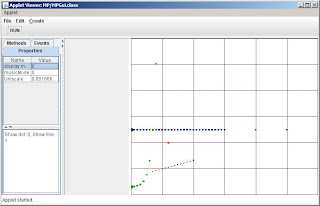- Display methods (annotated with @AutomatableMethod tag) associated with pCSDT object in a proper way. Currently after a pCSDT object is selected, the assoicated method name is displayed correctly, but not the parameter listing. Changes in parameter value there should be able to be copied to statement tree after drag-n-drop.

- Render statement tree (the structure which stores codelets) properly in scriptlet panel.

Progress:
- Basically successfully display the methods of the selected object in the render view. The method name is in the form of border title, while the parameter values to be filled are shown as text fields inside. Tool tip text is available when one moves over the text field. Run SB/SBGui.java for a live demo.






